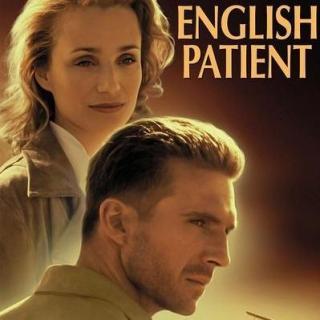
介绍:
(点击右边黑三角下拉有中英配文)
South Cairo 1930-1938
开罗南部 一九三零年至一九三八年
THERE is, after Herodotus, little interest by the Western world towards the desert for hundreds of years. From 425 B.C. to the beginning of the twentieth century there is an averting of eyes. Silence. The nineteenth century was an age of river seekers.
仕希罗多德之后,几百年来,西方世界的人对沙漠一直没有多大兴趣,从公元前四二五年到二十世纪初,人们的看法才慢慢地有所改变。十九世纪是个河流探寻者的时代。
And then in the 1920s there is a sweet postscript history on this pocket of earth, made mostly by privately funded expeditions and followed by modest lectures given at the Geographical Society in London at Kensington Gore.
而后到一九二○年,又出现一部引人人胜的后继史书,来介绍地球上的这一地区。这部历史的内容大部分得自私人资助的勘探,而后地理协会在伦敦肯辛顿区举办的演讲又丰富了它的内容。
These lectures are given by sunburned, exhausted men who, like Conrad’s sailors, are not too comfortable with the etiquette of taxis, the quick, flat wit of bus conductors.
演讲者皮肤晒得黑黝黝的,满脸疲惫,看起来就像康拉德小说里的水手。他们对出租车司机的彬彬有礼和公车查票员敏捷无味的幽默机智不太习惯。
When they travel by local trains from the suburbs towards Knightsbridge on their way to Society meetings, they are often lost, tickets misplaced, clinging only to their old maps and carrying their lecture notes—which were slowly and painfully written—in their ever present knapsacks which will always be a part of their bodies.
他们搭乘当地火车从近郊到骑士桥去出席协会会议的路上,经常迷路或找不到车。他们只是紧紧地抱住他们的破地图,背包里面放着他们字斟句酌,费劲写好的讲稿,那背包常被看作是他们身体的一部分。
These men of all nations travel at that early evening hour, six o’clock, when there is the light of the solitary. It is an anonymous time, most of the city is going home. The explorers arrive too early at Kensington Gore, eat at the Lyons Corner House and then enter the Geographical Society,
where they sit in the upstairs hall next to the large Maori canoe, going over their notes. At eight o’clock the talks begin.
这些来自各国的人士早在晚上六点钟便出发了,当时只有孤零零的一盏灯。这是一个百无聊赖的时间。城市中大多数人都回家了。探险家们到达肯辛顿区的时间太早了,他们在莱昂街角餐厅吃了饭,然后进入地理协会,坐在楼上走廊一艘毛利人的大独木舟旁边,复习着他们的讲稿。八点钟,发言开始了。
Every other week there is a lecture. Someone will introduce the talk and someone will give thanks.
每个星期都有一场演讲。有人介绍发言内容,有人表示感恩。
The years of preparation and research and fund-raising are never mentioned in these oak rooms. The previous week’s lecturer recorded the loss of thirty people in ice in Antarctica. Similar losses in extreme heat or windstorm are announced with minimal eulogy. All human and financial behaviour lies on the far side of the issue being discussed—which is the earth’s surface and its “interesting geographical problems.”
在这间橡木屋子里,人们从未谈论年复一年的准备研究及基金的募集。上周的演讲者陈述了在南极大陆的雪地中失去三十人的消息。同样地,在宣布沙漠中和风暴里的人员损失时,大家也并未大肆歌功颂德。人力和财力的问题很少会纳入讨论的范围。目前讨论的问题是地球表面和它“有趣的地理问题”。
John Bell, director of Desert Surveys in Egypt, asked these questions in 1927. Can other depressions in this region, besides the much-discussed Wadi Rayan, be considered possible of utilization in connection with irrigation or drainage of the Nile Delta?
埃及“国际沙漠勘探协会”的约翰•贝尔于一九二七年提出这些问题。除了已多次讨论过的赖延河道,尼罗河三角洲的灌溉和排水是否还有可能利用这个地区的其它洼地来进行?
By the 1930s the papers grew even more modest. “I should like to add a few remarks on some of the points raised in the interesting discussion on the ‘Prehistoric Geography of Kharga Oasis.’ “ By the mid-1930s the lost oasis of Zerzura was found by Ladislaus de Almasy and his
companions.
到了二十世纪三十年代,报纸的用词变得谦虚了。“对于哈尔绿洲的史前地理所引起的有趣讨论,我想补充一点意见。”到了三十年代中期,失落的泽祖拉绿洲被拉斯洛•奥尔马希和他的勘探队队员们找到了。
In 1939 the great decade of Libyan Desert expeditions came to an end, and this vast and silent pocket of the earth became one of the theatres of war.
利比亚沙漠的勘探十年来成就非凡,却不得不在一九三九年告终,地球上这块广阔宁静的土地变成了战场。
----每周一/三/五晚更---- 【文本翻译均为电台英伦好声音读给你听所有,转载请联系播主并注明】
大家还在听

